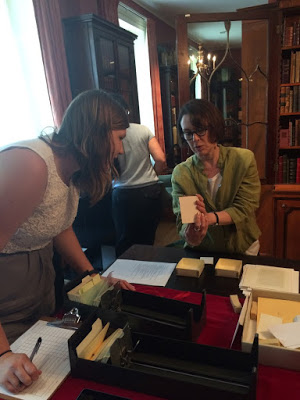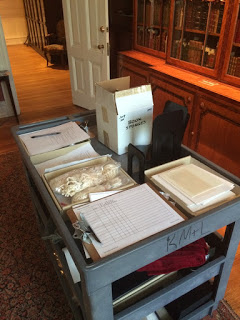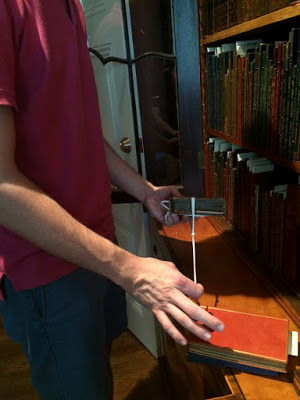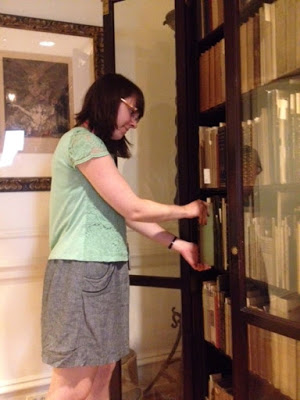Since this is my first Rosen-blog post, I thought I would tell you a few things about myself: I love pencils, spreadsheets, organizing things, and my birthday. Starting collections inventory the week of my birthday is pretty much the best present (if present is defined as ‘work activity’) I could ask for!
Conducting inventory is an important collections management exercise for museums striving to meet the collections stewardship standards set forth by the American Alliance of Museums (AAM). It is an essential component of documenting the current condition and location of each object, especially since our collections are regularly used for researchers, Hands on Tours, exhibitions, and loans. Inventory is also the perfect time for me, a relative Rosenbach newbie, and interns Emily and Allison to learn about the important books in our collections.
 |
| Judy Guston and Allison Darhun examine Judaica |
While I have done five collections inventories at my former museum and presented Inventory: Important! Intimidating! But Not Impossible! at the 2012 MAAM conference, I was happy that Librarian Elizabeth Fuller was leading Phase I of our inventory project: shelf reading the books in the library collection.
 |
| Shrek on a cart |
Elizabeth began with instructions for the project and an orientation to the Shelf Reading Kit, quickly renamed the Shrek. The Shrek includes a reference list of collections codes; a worksheet (yay!); envelopes for preserving small paper fragments; envelopes for old paging slips (but only if the book has been properly returned to the shelf!), acid-free ID strips, grip-tites (my new favorite supply– pre-measured twill tape that go around the book and are pulled tight to keep covers together with their books), sponges for dusting, and a trash bag (for evil things like paperclips and dirty sponges). We also have improved separation boards with pockets to hold the paging slips that we use as space savers to indicate when a book has been temporarily removed from shelf.
 |
| Patrick Rodgers (the headless curator) demonstrates the use of a grip-tite |
Divided into teams of two, we were sent to different areas of the library to begin the shelf reading. One person reads from the card catalog and the other carefully removes the book from the shelf (never grabbing or pulling on the top of the spine) and confirms that the book has the matching call number and an ID strip in the proper location. Condition problems are noted, and the book edges are dusted when necessary. Kathy and Patrick completed their section of 17th Century British Literature, (EL1), with ease and made headway with EL2. Emily and I started with Fine Press, while Allison and Judy worked with Incunables and Judaica. We have only covered a fraction of the collection (Elizabeth is still crunching the numbers but I am sure she will have an exact percentage soon), but I am looking forward to this regular Monday project.
 |
| Emily Pazar reshelves a book in Fine Press |
Jobi Zink has been the registrar at the Rosenbach of the Free Library of Philadelphia since July 2014. Previously she spent 15 years as the registrar of the Jewish Museum of Maryland.

